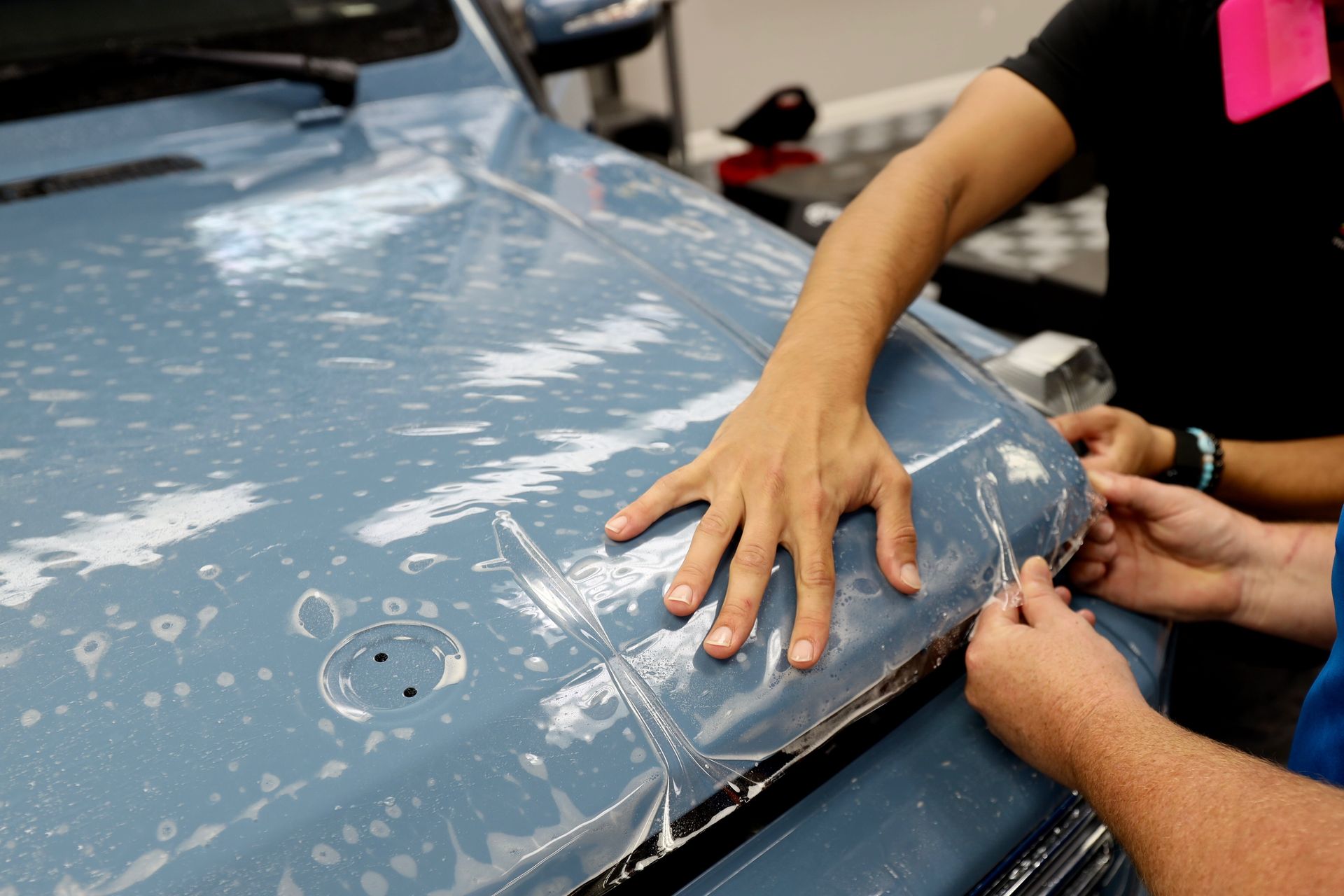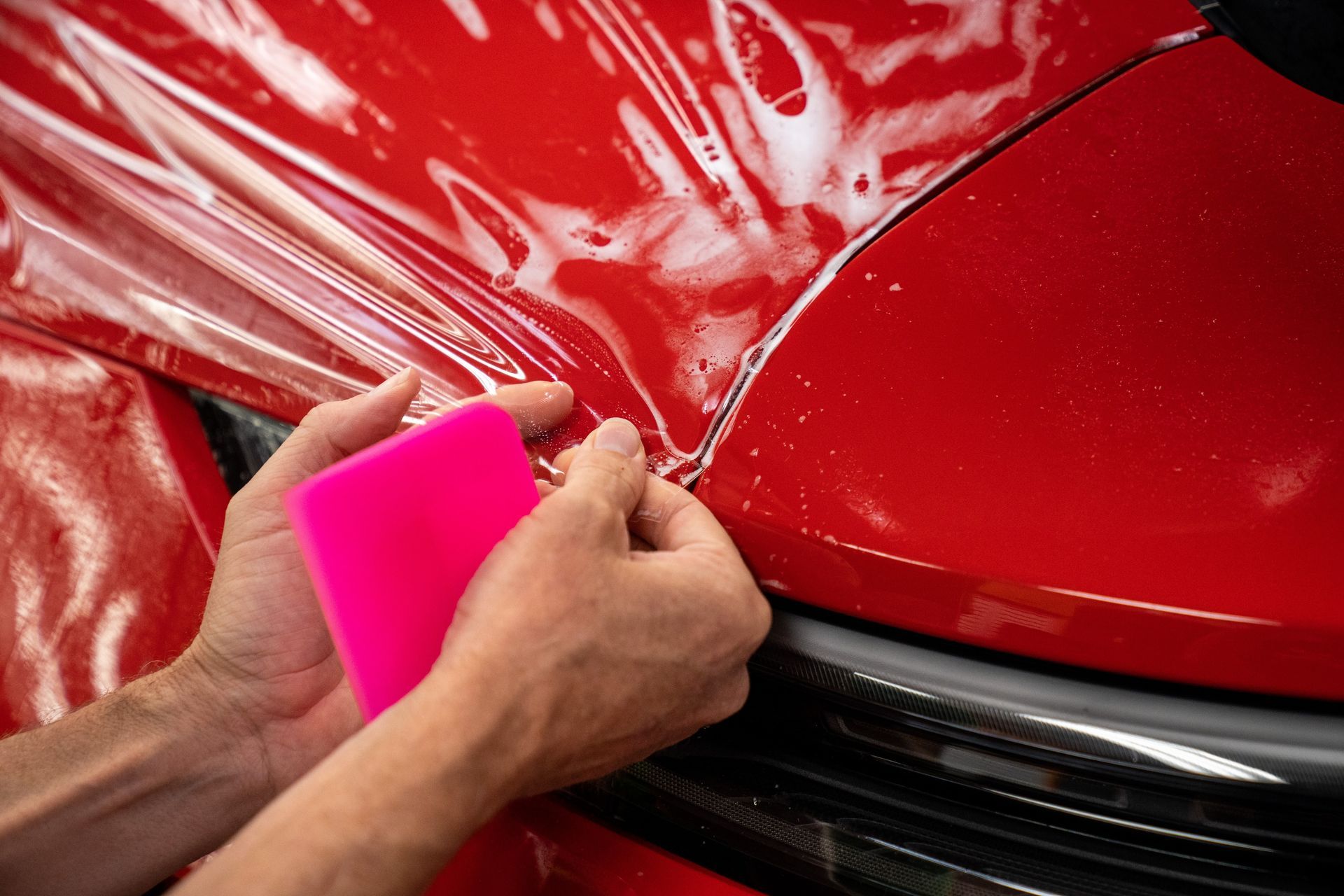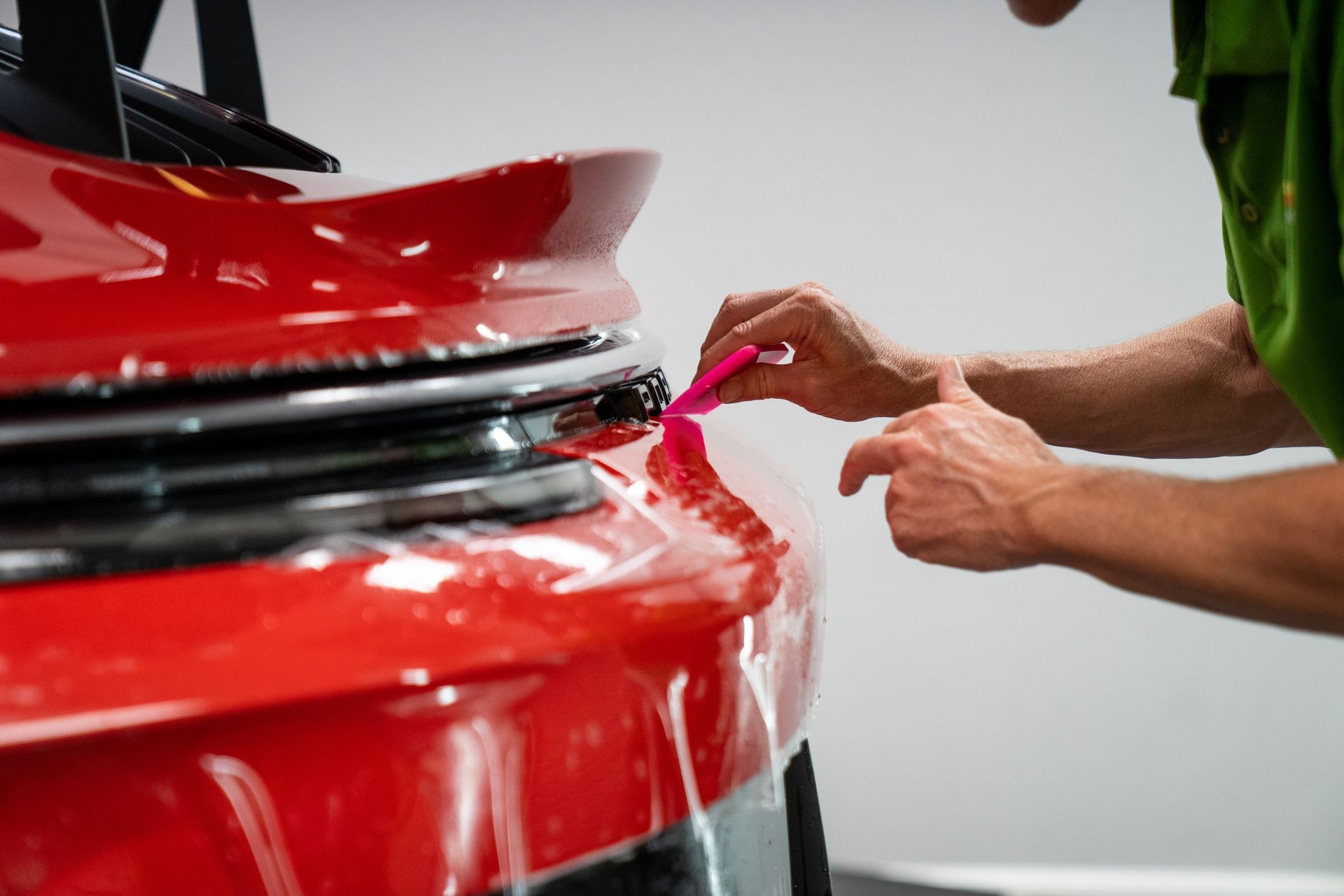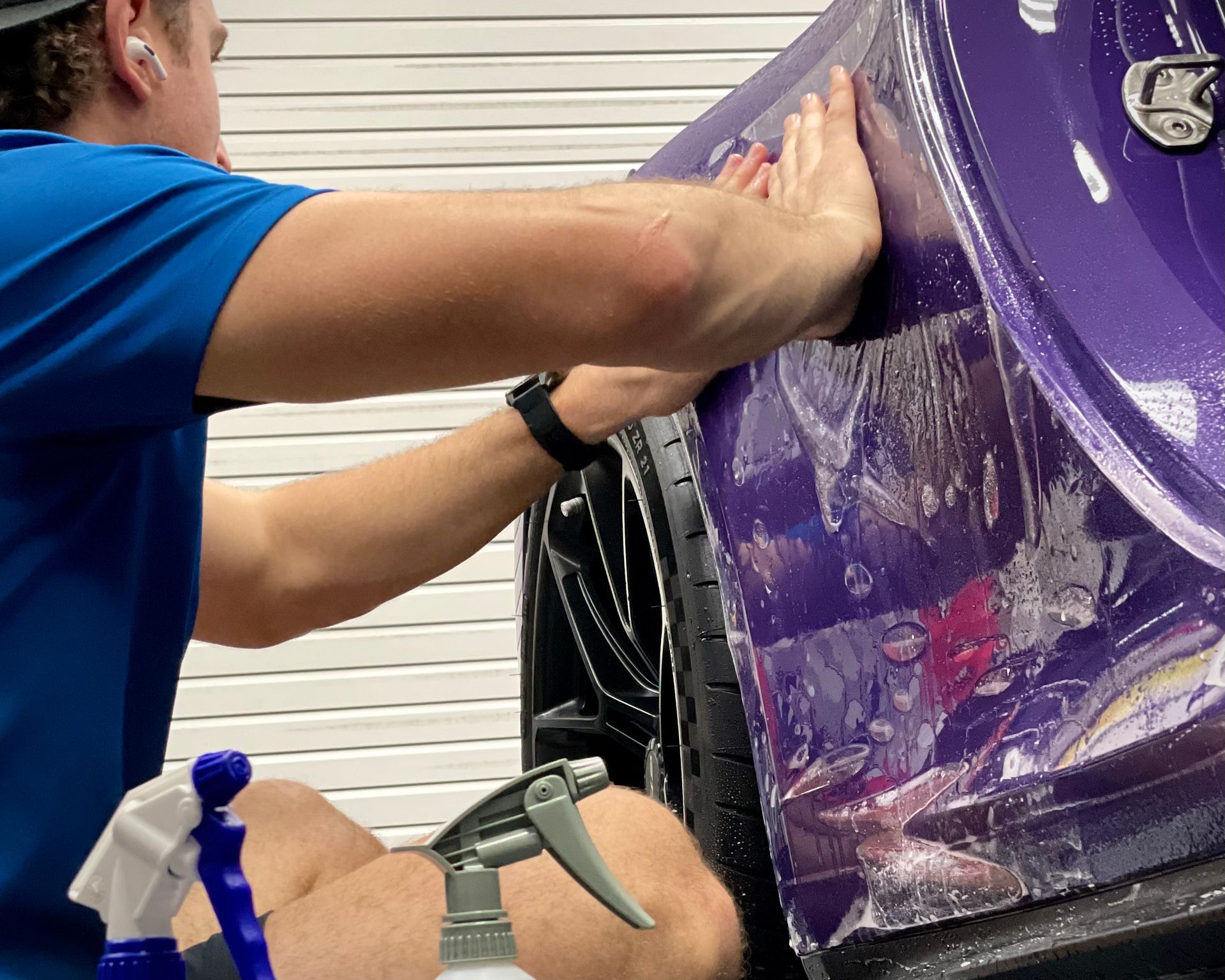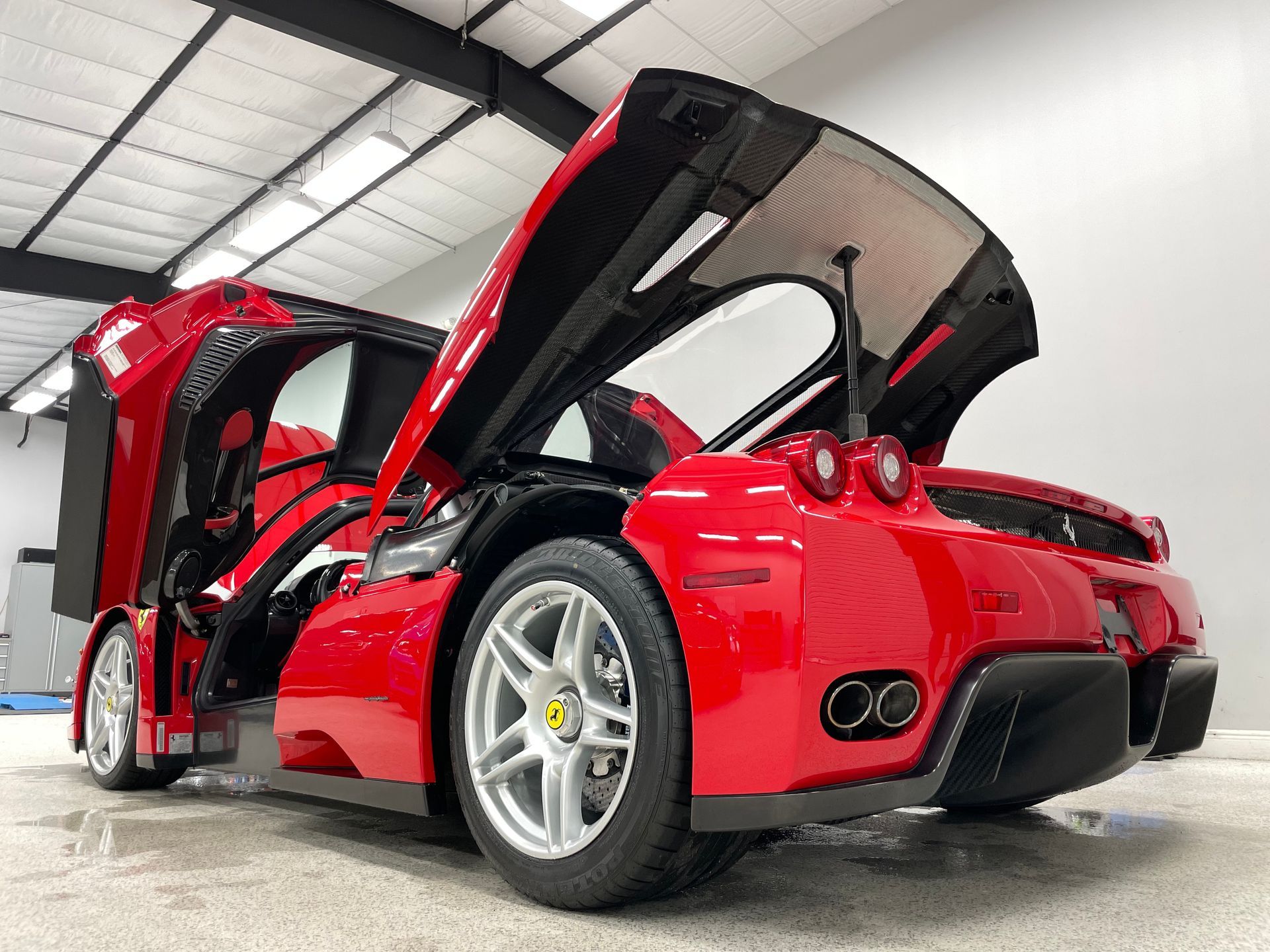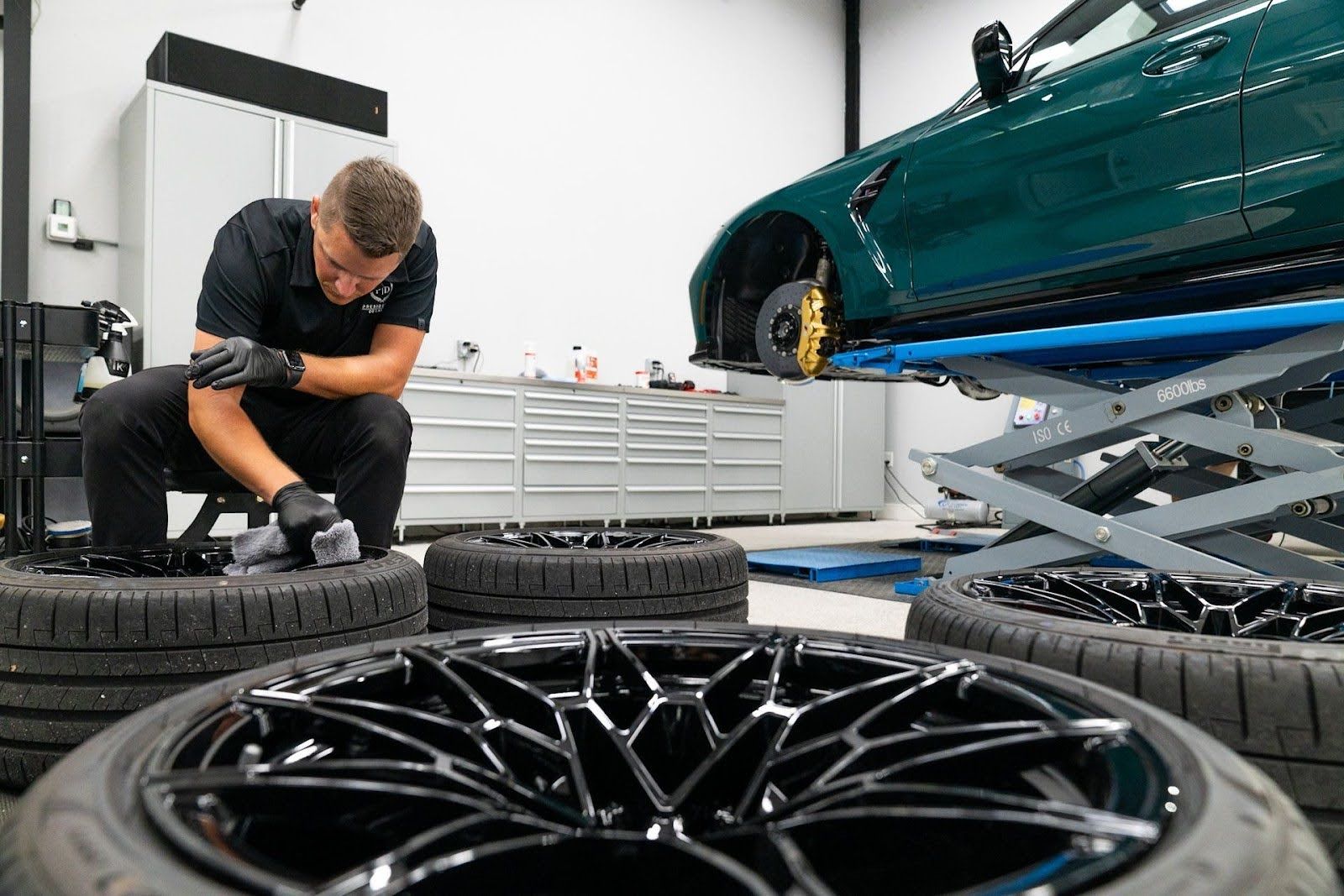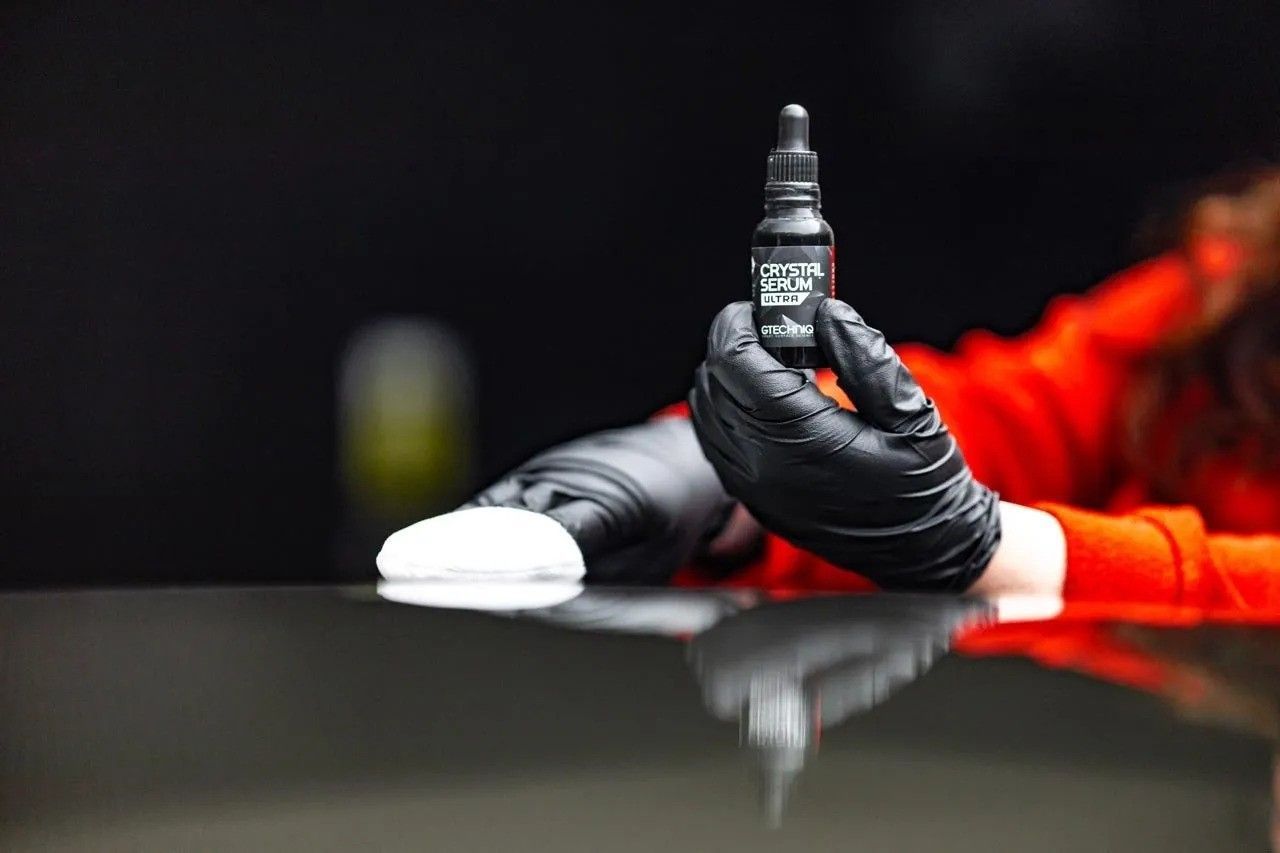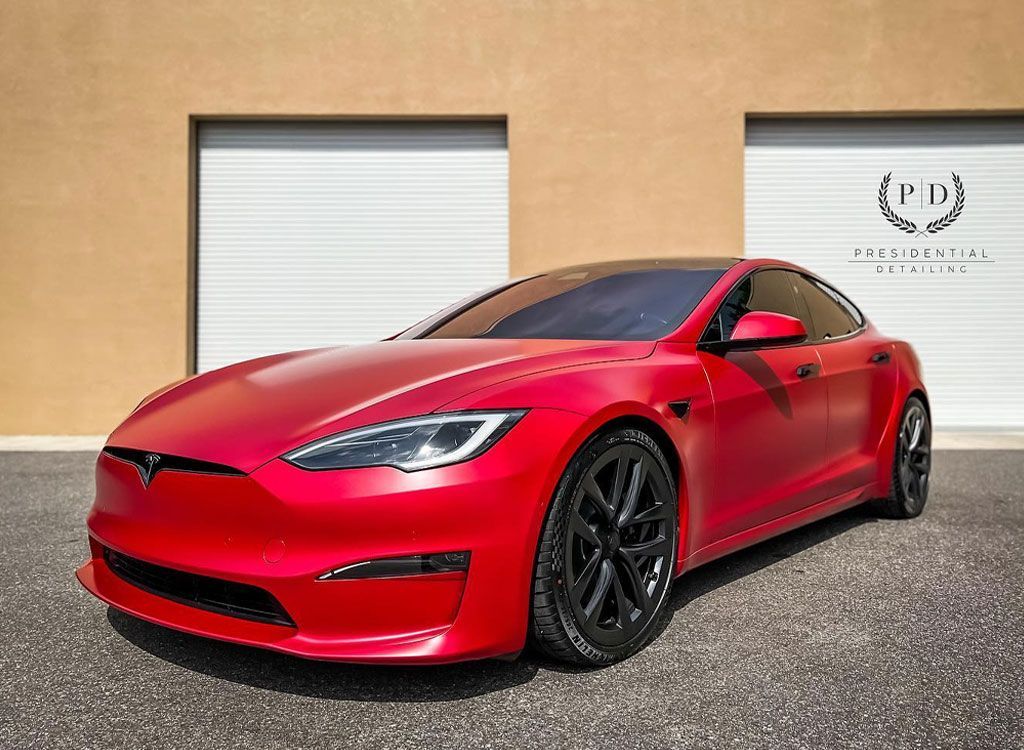Debunking Common Myths About Paint Protection Film: Separating Fact from Fiction in Automotive Care
CALL (813) 723-9679
GET A FREE ESTIMATEFor any car enthusiast, there’s nothing quite as satisfying as maintaining your vehicle's pristine appearance. Yet, confusion and skepticism often cloud decisions around protecting that paint job. You might have heard that paint protection film is either an expensive investment or an ineffective solution against the elements. But how much of that is fact, and how much is myth?
One common myth about paint protection film is that it's only for luxury cars, but in reality, it's a practical investment for any car owner, new or used. Another myth is that paint protection films are very costly, but costs have come down significantly in recent years, making them an accessible long-term investment for preserving a car's value and appearance.
What Is Paint Protection Film (PPF)?
Have you ever marveled at the glossy, immaculate finish of a new car? Well, behind that lustrous exterior lies an incredibly thin, transparent layer—the paint protection film. This remarkable shield is crafted from thermoplastic urethane, a robust material designed to safeguard the vehicle's surface from scratches, rock chips, and environmental contaminants. Originally developed to protect helicopter blades in the military, paint protection film has evolved into a versatile solution for automotive care. The beauty of paint protection film lies in its ability to preserve your vehicle's original paintwork for years. Unlike traditional wax or sealants, which offer limited protection, a paint protection film forms an invisible barrier that shields the surface from everyday wear and tear. Whether it’s the debris kicked up by a passing truck or atmospheric pollutants, a paint protection film acts as an armor, ensuring that your car's paint job stays as pristine as the day it left the factory.
But the story doesn't end there. Modern paint protection films have embraced cutting-edge technology to further elevate their performance. For instance, high-quality variants come equipped with self-healing properties. This means that when exposed to heat, minor scratches on the film vanish, leaving the surface as flawless as before. Imagine having a protective layer that can repair itself—this feature not only enhances the lifespan of the film but also maintains the aesthetic appeal of your vehicle. A paint protection film also boasts impressive versatility when it comes to application. It can be seamlessly applied over the entire vehicle or selectively on specific areas such as the hood, fenders, and mirrors. This tailored approach provides owners with the flexibility to prioritize high-impact zones while maintaining the overall visual appeal of their vehicles.
Consider a scenario where you venture off on a cross-country road trip. As you navigate through diverse terrains and weather conditions, your vehicle continuously faces the brunt of gravel, mud, insects, and more. Here's where a paint protection film shines—it acts as an impermeable shield, diligently safeguarding your car’s exterior from unsightly blemishes. In essence, a paint protection film stands as a pivotal innovation in automotive care—offering unparalleled protection against damage while ensuring your vehicle retains its showroom shine for years to come.
How PPF is Applied to Vehicles
The process of applying paint protection film to a vehicle is both intricate and crucial, ensuring the protection film is flawlessly installed for maximum effectiveness. It involves several meticulous steps carried out by skilled professionals to ensure the best possible outcome.
- Vehicle Preparation: Before the application begins, the vehicle's surface undergoes a thorough cleaning process. This critical step removes any dirt, grease, or existing contaminants that can interfere with the film’s adhesion. A clay bar treatment is typically employed to establish a clean and optimal canvas onto which the paint protection film can be securely applied. When you take your car in for paint protection film installation, you'd want the surface to be as clean as possible. Just like when you're painting walls at home, any speck of dirt or imperfection underneath will affect the end result. The smoother and cleaner the surface is, the better the paint protection film will adhere, ensuring that it provides the best possible protection for your vehicle.
- Cutting: Once the vehicle's surface is immaculate, attention turns to precision cutting. The paint protection film can either be pre-cut using templates designed to fit specific car models or custom-cut on-site for a perfect fit. Pre-cut films offer a quicker application process as they are tailored to match various car models. On the other hand, a custom fit involves manual cutting during installation to ensure every edge aligns seamlessly with the vehicle's features. The type of film cutting used depends on personal preference as well as specific requirements. Pre-cut films are generally well-suited for most popular car models, while custom cuts provide a more tailor-made solution.
- Wet Application: Next comes the wet application stage, where a precise mixture of water and soap is meticulously sprayed onto the car's surface. This specially formulated solution allows the film to be easily adjusted and correctly positioned before adhering firmly. Wet application provides installers with flexibility in positioning and ensures that there are no premature adhesions that could lead to wrinkling. Think of it like applying a screen protector to your phone—a little bit of moisture helps you adjust its position perfectly before smoothing out any air bubbles.
- Squeegeeing: Using specialized tools like a squeegee, skilled installers carefully smooth out the film across the surface of the vehicle. This meticulous process removes bubbles and excess solution while ensuring that the film adheres correctly without any wrinkles or imperfections. It's not like putting up wallpaper: You need to make sure it goes on smoothly without any creases or air bubbles underneath.
- Drying and Curing: After being expertly applied, the newly installed paint protection film requires time to dry and cure fully. During this period, it's important not to wash or otherwise disturb the outer surfaces of the vehicle in order to avoid disrupting or damaging the application process.
The professional application of paint protection film involves attention to detail at every step. From meticulous cleaning and preparation to precise cutting and seamless installation, each stage contributes to ensuring that your vehicle receives superior protection without compromising its appearance.
Debunking Myths About PPF
Myths and misconceptions about paint protection film have circulated for years, leading many to make misinformed decisions about this valuable automotive care technology. Let's debunk a few of these myths to give you a clearer understanding of what a paint protection film can offer and whether it might be the right choice for your vehicle.
Myth 1: PPF is Exorbitantly Expensive
One common myth surrounding paint protection film is the notion that it's simply too expensive for the average car owner. While it's true that initially, costs can start around $2000, it's essential to view paint protection film as a long-term investment rather than an immediate expense. It is crucial to understand that paint protection film safeguards the vehicle's resale value by preserving its paint job, making it a financially prudent decision in the long run. Over the years, prices have become more competitive, enabling more car owners to consider this protective option. When weighing the cost of paint protection film against potential paint damage repair expenses and reduced resale value due to wear and tear, the value becomes evident. Consider this: spending on PPF now could save you significant money in the future when it comes to maintaining or selling your vehicle. It represents an investment in preserving the quality of your car's appearance and protecting its value.
Myth 2: PPF is Only for Luxury Cars
Another misconception is that paint protection film is exclusively for luxury cars. In reality, a paint protection film is beneficial for all vehicles, regardless of their class or brand. Whether you drive a high-end luxury car or a daily commuter, a paint protection film plays a crucial role in protecting your vehicle from unavoidable road damage. Its impact on prolonging the appearance and integrity of the paint goes beyond just luxury cars, making it a practical investment for any car owner. Moreover, regardless of your vehicle's make and model, having a paint protection film installed showcases responsible ownership by prioritizing proactive measures to maintain your car. It demonstrates a commitment to preserving your car's appearance and structural integrity against everyday wear and tear.
Myth 3: PPF Yellows Over Time
There's a pervasive belief that a paint protection film yellows over time due to exposure to environmental factors. However, modern advancements in paint protection film materials have greatly mitigated this issue. High-quality PPF made from aliphatic TPU films resists yellowing and lasts significantly longer when compared to cheaper PVC or TPH films, which are more prone to discoloration with prolonged UV exposure. Think of it like investing in a durable raincoat—by opting for higher-grade materials, you ensure better resistance against elements like UV rays and environmental pollutants that could potentially degrade the protective film over time. This superior quality not only provides an added layer of defense for your automobile but also maintains its aesthetic appeal for an extended duration.
By dispelling these myths about paint protection film, we aim to offer a balanced understanding of its benefits and capabilities, helping you make an informed decision about caring for your vehicle's exterior.
Real Benefits of PPF
Paint protection film is not just a luxury add-on for vehicles. It serves multiple practical purposes, making it a sensible investment for any car owner, new or used.
- Protection Against Physical Damage: One of the major advantages of paint protection film is its ability to act as a shield against various forms of physical damage. Be it minor abrasions, rock chips from loose gravel on the road, or unsightly scratches from debris, PPF provides an additional layer of protection for your vehicle's precious paintwork. It acts as a sacrificial layer, absorbing the impact and preventing the damage from reaching the original paint surface. This is particularly beneficial for those who frequent rough terrain or heavily trafficked highways. Think of it as an invisible armor that takes the hit first, sparing your car from unsightly blemishes and preserving its flawless exterior. This means fewer trips to the body shop for touch-ups and resprays, saving you both time and money in the long run.
- Maintenance of Aesthetic Value: Beyond physical protection, a paint protection film plays a crucial role in maintaining the aesthetic appeal of your vehicle. By shielding the paintwork from external elements and daily wear, a paint protection film helps your car retain its showroom-quality finish for much longer. This has significant implications for preserving your car's resale value, as a well-maintained exterior greatly enhances its market desirability and commanded price. It's akin to wrapping your vehicle in a protective bubble, shielding it from environmental hazards that would otherwise take a toll on its appearance. Consequently, potential buyers will be drawn to a vehicle that looks pristine and well-cared-for—reflecting positively on your ownership and bolstering its resale potential.
- Easy to Clean: Moreover, investing in a paint protection film simplifies the process of maintaining your vehicle's cleanliness. The film has hydrophobic properties that repel water and contaminants, making it easier to wash off dirt, bugs, bird droppings, and other forms of grime. This not only saves time during cleaning but also reduces the effort required to maintain your car's polished look. Imagine being able to swiftly wipe your car clean after a long drive through dusty roads or effortlessly remove stubborn stains left by insects. A paint protection film significantly eases the burden of exterior maintenance, offering convenience alongside protection.
- UV Protection: Lastly, high-quality paint protection film provides valuable ultraviolet (UV) protection to safeguard your car's paint from the harsh effects of prolonged sun exposure. Without a paint protection film, UV rays can lead to paint fading and discoloration over time. By acting as a defense against UV radiation, a paint protection film ensures that your vehicle's exterior retains its vibrant color and luster over the years. This ultimately translates into a longer-lasting visual appeal for your vehicle while reducing the need for frequent repainting or restoration due to sun-induced damage. With a paint protection film in place, you can take to the road with confidence, knowing that your car is shielded from both physical and environmental harm.
With these tangible benefits, it's evident that paint protection film should be seen as more than just an optional upgrade—it's an essential investment that offers comprehensive protection and maintenance solutions for your vehicle's exterior.
Limitations and Considerations
When considering paint protection film for your vehicle, it's important to understand that while it offers remarkable protection, there are some factors to keep in mind. While a paint protection film does an excellent job defending against everyday wear and tear, it may not offer complete protection against severe impacts or large debris. While it can withstand minor to moderate abrasions, more extreme impacts can still damage the underlying paint. High-quality paint protection film provides outstanding protection within its limits, but it’s important to acknowledge that there are circumstances where it may not be able to prevent all damage. For example, in scenarios such as a serious collision or a harsh impact from a large rock or object, a paint protection film may not provide comprehensive protection. This limitation is not a flaw in the product but rather an intrinsic aspect of its function. It's no different than having realistic expectations for any protective product; acknowledging its strengths while understanding its limitations enables you to make informed decisions about its usage and care for your vehicle.
Comparing PPF to Other Protective Options
When it comes to safeguarding your car's paint job, there are different methods available, each with unique strengths and weaknesses. Let's take a closer look at how paint protection film compares to other protective options.
- Ceramic Coatings: Ceramic coatings provide a hard, glossy shell that repels water and contaminants, thus offering excellent protection against environmental damage. However, they do not provide the same level of physical impact protection as a paint protection film. They are more focused on maintaining the smooth texture and shine of the vehicle's surface rather than acting as a primary barrier against scratches and rock chips. Ceramic coatings complement paint protection film options to enhance protection by creating a hydrophobic and self-cleaning layer that repels dirt, making it easier to maintain the car's exterior cleanliness.
- Vinyl Wraps: Unlike paint protection film, vinyl wraps primarily serve as a means to change a vehicle's appearance while offering some degree of surface protection. They are generally less durable compared to paint protection films and may be more prone to damage over time. While effective in providing color changes and graphic designs for vehicles, they may not hold up as well under environmental stress or physical impacts. Vinyl wraps are better suited for non-permanent alterations to a vehicle's appearance rather than as a primary protective measure for the external surfaces.
- Traditional Waxes and Sealants: Traditional waxes and sealants offer a temporary layer of protection and enhance the shine of the vehicle’s paint. However, compared to paint protection films, they require more frequent reapplication due to their limited durability. Additionally, they do not provide the same level of defense against physical damage as a paint protection film does. While traditional waxes and sealants can enhance the visual appeal of the car's paintwork and provide some level of protection against minor elements, they lack the long-term resilience and scratch resistance demonstrated by high-quality paint protection films.
By understanding the real benefits and considerations associated with a paint protection film alongside these alternative options, vehicle owners gain valuable insight into which method best suits their needs for protecting and maintaining their car’s exterior appearance and condition.
Unrivaled PPF Experts in Sarasota, FL
Preserve your vehicle's pristine condition with the help of Presidential Automotive Detailing, the unrivaled paint protection film experts in Sarasota, FL. Our team specializes in the meticulous installation of paint protection film, providing an invisible layer of defense against scratches, chips, and environmental damage. Using high-quality materials and precise techniques, we ensure your car remains protected and retains its showroom finish. Trust our expertise to keep your vehicle looking flawless. Schedule your paint protection film service today and experience the unmatched protection and care we offer. Call us at (813) 723-9679 to get started!

